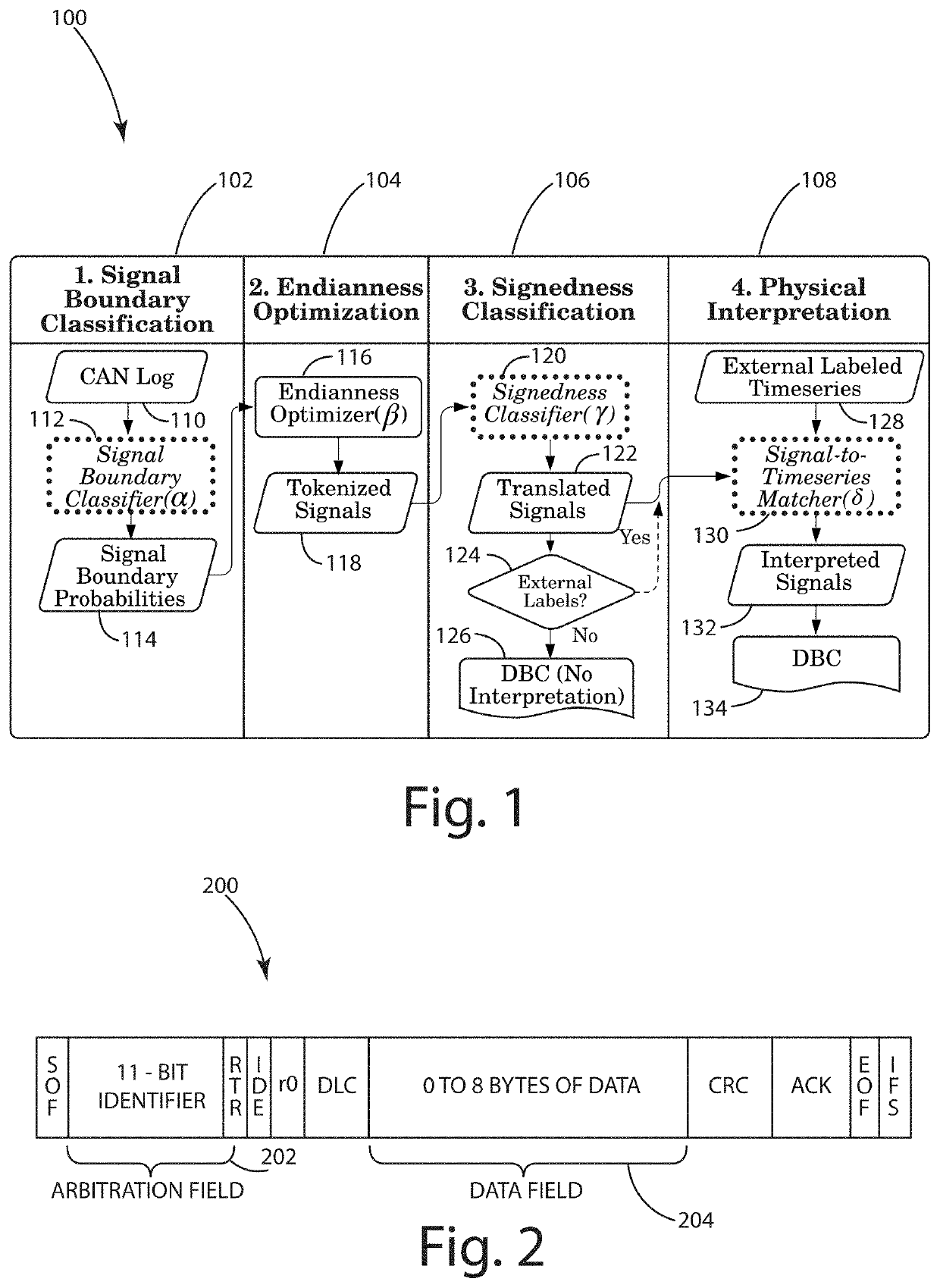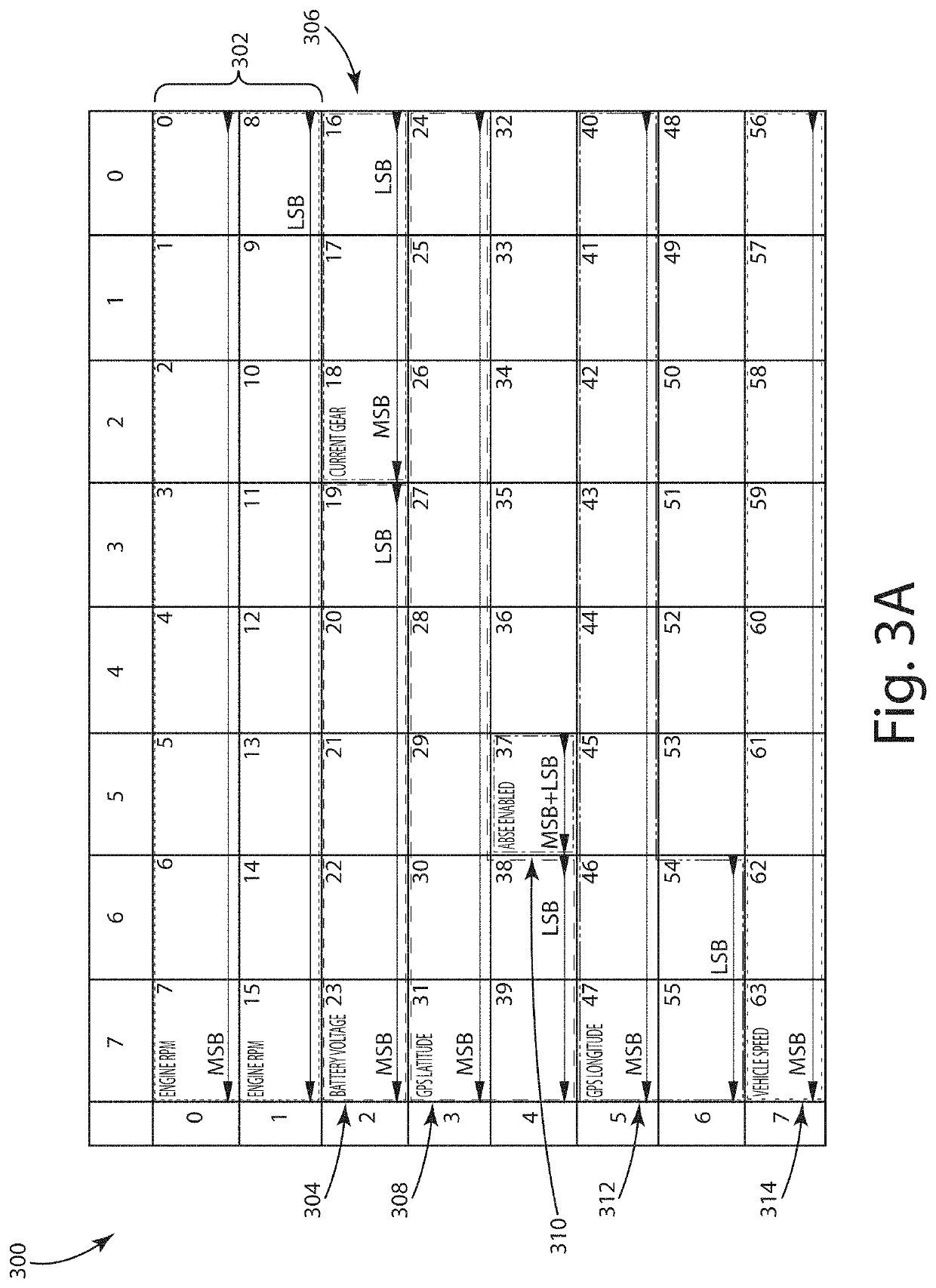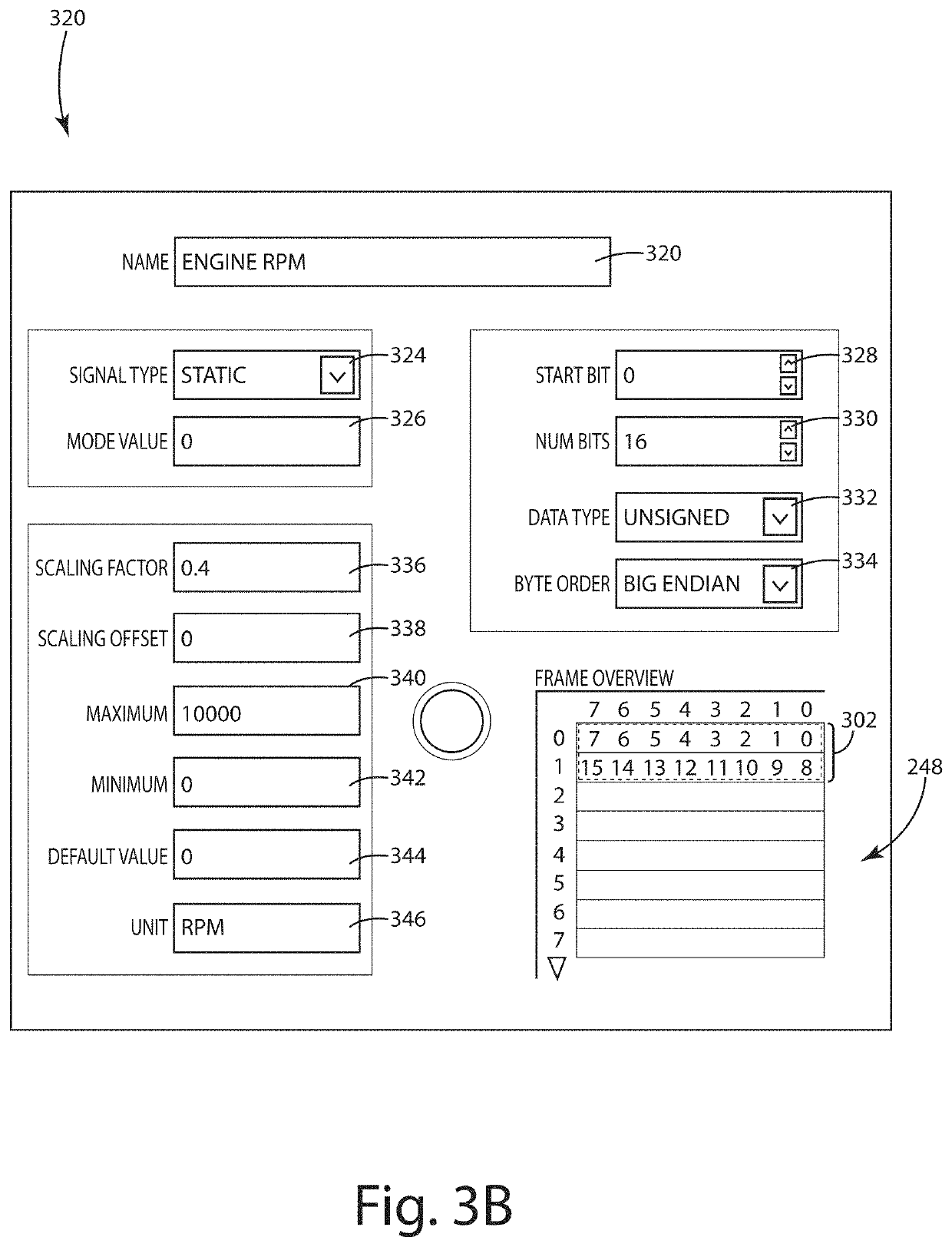Controller area network decoder (can-d)
a controller and control area technology, applied in the field of automotive controller area networks, can solve the problems of difficult to discern where certain signals begin and end within the can data field, the uninterpretable wealth of real-time vehicle information hidden in the can communication, and the general difficulty of detecting the beginning and end of certain signals in the can data field
- Summary
- Abstract
- Description
- Claims
- Application Information
AI Technical Summary
Benefits of technology
Problems solved by technology
Method used
Image
Examples
Embodiment Construction
[0040]The present disclosure is generally directed to apparatuses, systems, and methods for CAN decoding and can be generally referred to as CAN-D (CAN Decoder). Current embodiments of CAN-D emphasize automatic reverse engineering of CAN mappings and use of those CAN mappings to decode CAN signals in real time. The present disclosure provides apparatuses, systems, and methods for tokenization and translation of vehicle controller area network data (CAN) that are vehicle agnostic. The systems and methods of the present disclosure include an algorithmic reverse engineering pipeline that exhibits state-of-the-art CAN signal extraction, and a lightweight hardware integration allowing OBD-II plugin for real-time CAN decoding.
[0041]One problem with CANs is that the encodings of signals into CAN packets are proprietary secrets that vary per make, model, year, even trim. Hence, without an automatic or semi-automatic decoding system and method, decoding efforts are generally per-vehicle ende...
PUM
 Login to View More
Login to View More Abstract
Description
Claims
Application Information
 Login to View More
Login to View More - R&D
- Intellectual Property
- Life Sciences
- Materials
- Tech Scout
- Unparalleled Data Quality
- Higher Quality Content
- 60% Fewer Hallucinations
Browse by: Latest US Patents, China's latest patents, Technical Efficacy Thesaurus, Application Domain, Technology Topic, Popular Technical Reports.
© 2025 PatSnap. All rights reserved.Legal|Privacy policy|Modern Slavery Act Transparency Statement|Sitemap|About US| Contact US: help@patsnap.com



